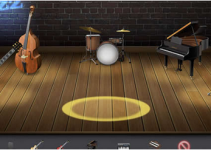iBoot is another great boot loader to install Mac OS X Snow Leopard 10.6 on a physical Intel computer or virtualization software Oracle VirtualBox. You can follow this method if you could not succeed with EFI Boot loaders or any others. I will show the step by step methods to use iBoot loader with VirtualBox to Install Snow Leopard and upgrade to latest version 10.6.4.
This boot loader is looking pretty good and I’m hoping this will work with most of the 32 bit and 64 bit Intel processors, I’m not sure about AMD processor. This particular bootloader developed by tonymac86 project.
Required Products
1) Oracle VirtualBox latest version
2) iBoot boot loader (It is available here)
Download all three versions. Use the correct ATI or NVIDIA version depending on your physical computer display card. If that doesn’t work then use ‘supported’ version.
In this example, I use the NVIDIA version.
NOTE: iBoot work for 10.6 Snow Leopard only. If you want to try the latest versions of macOS, then you need to look for a different type of boot loaders from tonymacx86 site here.

3) I hope you will have the Snow Leopard DVD or ISO file (If you have the physical DVD, better convert it to ISO file)
4) Make sure that the Virtualization Technology (VT) enabled on physical computer BIOS, you can read the steps here.
I’m installing and demonstrating these steps on my Intel Core2duo 2.66GHZ, 3GB RAM Windows 7 32 Bit computer. Yeah, it was pretty old, because it was done in the year 2010.
This boot loader will work with Intel processors only, it may fail for AMD users.
Follow the steps to use iBoot loader on VirtualBox.
1) Create a new virtual machine in VirtualBox.
Select Mac OS X Server as guest OS.
I allocated 1.5GB RAM and 20 GB new hard disk (Attach it to SATA type).
Enable VT, Nesting Paging and PAE under processor settings. Based on the version of VirtualBox, these options may vary.
Remove EFI boot loader option under System. This is to avoid booting the virtual machine from VirtualBox’s built-in EFI loader.
Allocate video memory to the maximum and select 3D acceleration under Display option.
See Also
Install Mac OS X Snow Leopard on VirtualBox with empireEFI Boot loader.
Snow Leopard 10.6.4 with VMware pre-installed image.
2) Mount the appropriate iBoot loader ISO file to CD Drive through Virtual Media manager.
3) Switch on the Virtual machine. You can see a screen as shown below, which is waiting for user input. Don’t press any keys.

4) Now remove (un-mount) iBoot ISO and load Mac OS X ISO file. Follow the steps to do it:
- Right Click on the CD icon on VirtualBox console and select More CD/DVD Images option as marked by arrows.
- In Virtual media manager, browse for Snow leopard ISO file and press OK.
- Once you are back to the initial screen, press F5 to refresh CD ROM then ENTER Key.
5) I’m sure the first installation screen will start normally.

6) If no disks are listed for the installation, go to Utilities, then disk utility and select the attached virtual hard disk.
Create a partition and give a name. Close the disk utility box once all done; newly created partition will appear for installation now. Select it and continue the installation.
On the same screen, select customize and remove printer drivers and language option to save time and disk space for this installation. This step is optional only.

7) Have you got the “Install Failed” message at end of installation? Don’t bother.
Restart the virtual machine. If the shutdown/restart doesn’t work in the normal way at end of the installation, we have to do it from VirtualBox console (Machine-> ACPI Shutdown and power off)
8) Make sure to mount the iBoot boot loader again to CD ROM before it starts, if not, the following error will appear.
“FATAL: No bootable medium found! System halted”
Mac OS X requires proper boot loader to boot from the hard disk on non-apple hardware. In this case, we will boot the virtual machine again by iBoot loader, then install the proper boot loader on the virtual hard disk.
9) On the next screen, press right arrow key, select the Mac hard disk and ENTER.

10) The Mac OS X will start with identifying the keyboard (Press escape key to ignore) and initial configuration. You need to set up them to use the OS. Finally, you must be getting a working Snow Leopard on VirtualBox with iBoot boot loader.

11) Some post-installation configurations and checkups.
Network – Worked out of the box.
USB support available
10.6.4 update (Manual or software update) worked
12) Boot from Hard Disk without iBoot boot loader
Make sure you take the snapshot of the virtual machine before continue.
To boot from hard disk, we need to install a package called ‘MultiBeast’. Either download it from VM or transfer from USB disk. After unzipping it, open MultiBeast.pkg.
Under custom install select ‘EasyBeast for Supported CPU’ option which supports Intel i5, i7, Core and Core2 CPUs. Description for each option can be viewed at the bottom of the box.

Do not press the continue button, go to the next step for more settings. (I already installed it, so I’m getting upgrade option)
13) Screen Size of Snow Leopard Virtual machine
Each boot loaders install separate com.apple.boot.plist file to get special features during boot up. Install this file to get the option to change screen size resolution.
In same Multibeast custom installation, go to Advanced Options and click com.apple.boot.plist.
Either select Verbose or Apple boot screen mode, but select the correct platform (bit version). I selected 32 Bit Apple Boot Screen since my host is 32-Bit and any time I can type –v in booting screen to get verbose mode.
Once installation completed, follow the steps here to change the screen resolution of Mac VM.
14) Sound
Several sound driver installation options available under Advanced options -> Kexts -> Audio.
I tried all of them, but nothing worked. These kexts help Mac OS to talk directly to physical sound, network or graphics chipsets. Since we are using them on a virtual platform, the VirtualBox can’t access the physical hardware as it doesn’t support Mac OS X guest officially.
Still, you can visit this sound driver page and install it. I’m happy with this driver as long as I can hear some sound from the virtual machine.
Here is a video explains similar steps. All credits go to the creator of the video.
Wrap Up
I mentioned the all possible installation and post configurations steps. Please note that we can’t get all Mac OS X features like using it on an Apple hardware. This method has plenty of limitations and it’s not recommended for long term use.
I suggest using it for learning purpose before you buy original hardware and software from Apple.






Are their any solutions yet to the bluescreen when trying to restart or shutdown? It will bluescreen on me then kernel panic every time. I can see this being a problem if there is an install that requires a restart.
Are you using the latest iBoot?
VirtualBox can boot Snow Leopard without third party boot loaders now,
Check this guide,
https://sysprobs.com/install-mac-snow-leopard-1063-oracle-virtualbox-32-apple-intel-pc
After modifying the key in the VMX file, shutdown and restart work fine. Let me know if this helps.
Hi Dinesh,
Don’t know if this thread is closed, but I’m having endless problems with this solution.
My specs, to start off with:
Intel i3 530 (Desktop)
Windows 7 x64
4Gb RAM
NVidia GT465 1GB
500 GB HDD (split)
VirtualBox 4.0.6 (Latest)
Mac OSx 10.6.3 installation disc (retail) that came with my Mac Book Pro
I did a bit of digging around assuming it’s my processor, but the i3 processor should be support out the box, not? I’m just playing around with Mac virtualization since I found that VB supports this, but I’ve only had issues, no closer to the end goal and believe, even more now that if you want a Mac just go buy one.
Thanks for your time
Note!
To anyone with similar problems as myself, a Mac Book Pro retail (OEM) DVD will not work. The tut clearly states that you need an off-the-shelf DVD, meaning Snow Leopard, in original pack bought at your favourite computer store.
I found that this is something a lot of readers don’t understand, as they don’t know the difference between OEM and “Retail”.
Thanks,
Eric
cant get it to work. gettin ACPI kernel panic.
am using 10.6.7 iso…..and latest iboot and virtual box…..however once i get the installation screen the mouse doesnt seem to work!
and i cant get past the second screen!
I am having the same problem… Did you find a fix or use a different iso of the OS?
Once I get to the grey Apple screen, a pop-up appears, and says “Guru meditation”. Any clue on how too fix this?
your cpu should be VT-x supportted otherwise you would get
It is a 2010 ThinkPad T410… I thought it had this? Am i wrong?
I get to the 6th step, and cannot proceed. All of the options under utilites (and everything else) is grayed out, and i can see the options, but not click on them. Any suggestions?
Thanks for your help.
I’m from Iran and my English isn’t good and I can’t thanks any more.
This is the only guide that has worked for me so far. I’ve tried so many guides before this one. Thank you so much!!!!!!!
Works good until reboot. I get the iBoot and OSX icons on the screen, right click and hit enter, screen goes blank for about 5 mintues and then I get the grey apple screen.
My mouse doesn’t work when in the install screen and it also says it cannot be installed.
Same as Dusty… I can select English using the cursor, but then I get the message “Can’t be installed”, maybe due to no partition,, but without mouse unable to select disk tool…
Thank you so much for your guides. Seriously.
I have been struggling with these problems for weeks, trying to get Mac OS X to install in VMWare Player, then VirtualBox, etc. It’s been such a headache.
I have done immense amounts of Googling to try and educate myself. Every other website I visited, was nearly junk. My results kept bringing me back here to SysProbs, the best guides on the net.
Finally, following this guide, for the first time, my Snow leopard is finally running on my i7 Vaio.
Thank you so much for all your help. Keep doin’ what you’re doin’ and writing these great guides.
Everything seems to go fine until I switch out the iBoot iso for the Boot camp iso made from a retail disk. When I hit F5, I get a string of EBios read errors. Any suggestions?
Thank you very much Dinesh!!! (from Hungary ;))
Hi Dinesh,
who to install in mac software install (p.c)
My specs, to start off with:
Intel i3 21000 (Desktop)
mother broad dh61ww
trancessed 4Gb RAM
ati gf 1GB
500 GB segate
how to install mac version install (desktop computer)
Thanks for your time